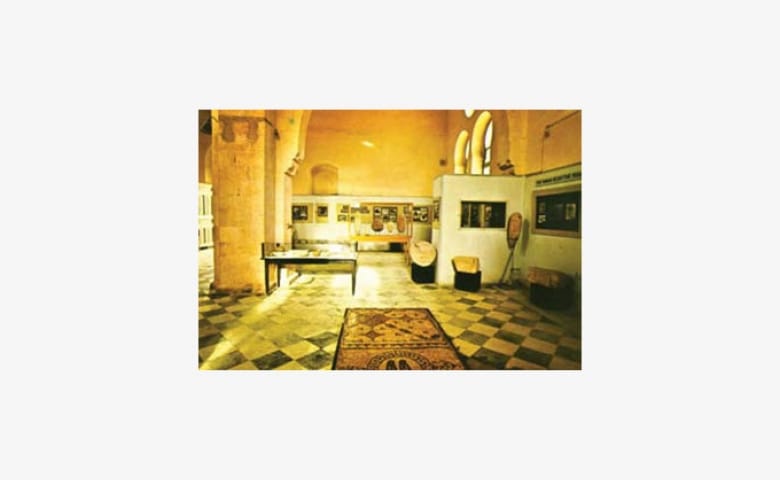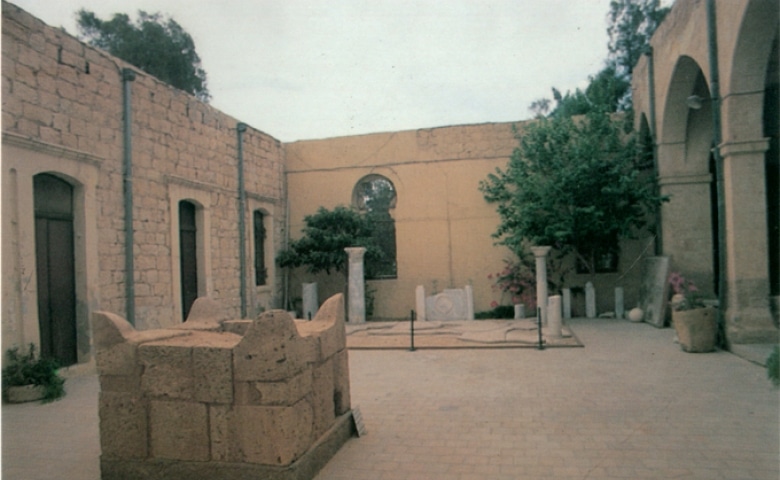The Great Mosque building (today the Museum of Islamic and Near Eastern Cultures) was constructed in 1906, one of a group of Ottoman government structures. The buildings include the seraya (the central Turkish government building) and the Governor’s House (today the Negev Museum of Art). The buildings are grouped along the main road entering the city’s center. The mosque was built diagonally to the course of the street, to comply with the direction of prayer towards Mecca. Most inhabitants of the Ottoman city were Arabs from Hebron and Gaza.
During the British Mandate (1917-1948), Muslims formed the majority in the city (2,790 out of the total population of 2960, in 1931) and the Great Mosque continued to serve as a religious center that attracted people from across the region. In October 1948 the Palmach’s Negev Brigade captured the town, which was then held by Egyptian army, and in 1950 the Jewish city of Be’er Sheva was founded. After the Israeli state was founded, the Great Mosque served as a detention center and the local court.
In 1952 the municipality decided to transform the former mosque into a museum of the Negev which would ‘reflect the Negev in all aspects’. Zvi Ofer, the civil engineer of the municipality, was appointed as founder of the museum. Correspondence concerning the opening of the museum shows that initially it was intended to become an educational endeavor that would present documentation of settlement in the Negev and ‘making the desert bloom’. The materials in the first exhibition included photographs documenting several subjects like: redemption of land, water facilities, labor and its rewards, as well as stamps and maps of the Negev. The Keren Kayemeth LeIsrael (Jewish National Fund) was allocated a quarter of the exhibition area. The entrance fee was 100 mils. Visitors were able to climb up the minaret of the mosque and survey the surrounding area. The museum’s official opening was on 19 November 1952.
During the city’s development, unique and important archaeological findings were revealed and brought to the museum. Further excavations in the 1950s enriched the collection with findings from the Chalcolithic period, the Israelite period, and the Byzantine. Over the years the mosque became a museum of archaeology and ethnography, with exhibits reflecting life and culture of the Negev.
The museum’s courtyard displayed archaeological findings such as column capitals and a mosaic floor dating to the Fifth-Sixth century. A collection of Stone Age flint tools was displayed in the exhibition hall, with tools and figures from the excavations of Khirbat Natar and Be’er Tzfad, a sundial carved from white stone, and fragments of a Byzantine inscription, among others. The most important finding in the permanent display was the large horned altar, discovered in the excavation of Tel Be’er Sheva in the summer of 1973. The findings were displayed in chronological order from the fourth millennium BCE up to the eighth century. The museum had a division for modern art, which exhibited paintings and drawings from the museum’s collections, and temporary exhibitions. There were also a reading room and library.
Over the years, attempts at restoration were made, since the building was becoming dilapidated, but the attempts failed and the structure was declared unsafe. In 1992 its archaeological collection was removed for storage by the Israel Antiquities Authority. Conservation and restoration of the building required major resources, and following the deposit of a program, the process got underway in 2008 and was concluded in 2010. The project was managed by the Be’er Sheva Economic Development Co. It included the execution of works to restore the structure, a replacement of infrastructures, and the building’s adaptation for use as a museum. At the end of the process, the municipality requested to resume its use as an archaeological museum. However, the Association for Assistance and Protection of Bedouin Rights, the Muslim committee of the Negev, and other bodies requested that the building return to its original use as a mosque, and a public debate ensued. During the dispute, activists petitioned the Supreme Court, which in 2011 held that the building should serve as a museum ‘dedicated uniquely to the culture of Islam and the peoples of the Near East’.
Even prior to the High Court’s ruling, the municipality of Be’er Sheva had launched a temporary exhibition on ‘The History of Be’er Sheva, 1900-2011’ curated by Goel Drory, which ran from November 2011 until October 2013. In tandem, the museum staff, its director Dr. Dalia Manor, and the curator Dr. Sharon Laor-Sirak began preparations for the reopening. In December 2014 the museum was opened in its new designation as the Museum of Islamic and Near Eastern Cultures with the permanent exhibition in the courtyard and a temporary exhibition – ‘Knots’.








